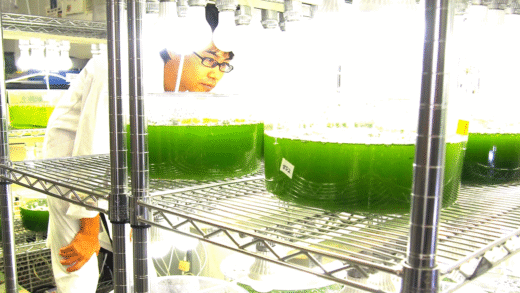Freshwater snails play crucial roles in ecosystems, contributing to nutrient cycling and serving as food sources. Despite their benefits, they can carry dangerous parasites affecting human health. Precautions are necessary for interacting with freshwater habitats, and interesting facts about these creatures enhance our understanding of their ecological importance.
Types of Freshwater Snails
Freshwater snails are fascinating creatures that play crucial roles in aquatic ecosystems. Among the various types of freshwater snails, some notable examples include:
- Planorbidae: These snails, commonly known as ramshorn snails, are easily recognized by their coiled shells. They thrive in ponds and slow-moving waters.
- Lymnaeidae: Known as pond snails, they inhabit marshes and lakes, often found near aquatic plants.
- Physidae: Also called bladder snails, they are often found in shallow waters and have a unique, elongated shell.
Freshwater snails inhabit various environments, including lakes, rivers, and wetlands. They prefer areas with abundant vegetation, which provides food and shelter. Understanding the variety of freshwater snails and their habitats helps us appreciate their ecological roles.
Differences Between Freshwater and Marine Snails
Freshwater snails differ significantly from their marine counterparts. While both belong to the class Gastropoda, their habitats and adaptations are distinct. Freshwater snails are adapted to live in freshwater bodies, while marine snails thrive in saltwater environments.
- Shell Structure: Freshwater snails often have thinner shells compared to marine snails, which need sturdier shells to withstand ocean currents.
- Respiration: Freshwater snails typically breathe through gills or lungs, whereas marine snails rely on gills for oxygen extraction from seawater.
Learning about these differences can enhance our understanding of how snails adapt to their respective environments.
Ecological Role of Freshwater Snails
Freshwater snails play an essential ecological role, particularly in nutrient recycling. They feed on decaying plant material and algae, breaking it down into simpler compounds that enrich the ecosystem.
- Nutrient Cycling: By feeding on organic matter, snails contribute to nutrient cycling, making nutrients available for plants and other organisms.
- Habitat for Other Species: Their shells provide homes for various microorganisms and invertebrates, fostering biodiversity.
Recognizing the contributions of freshwater snails to their environments highlights their importance in maintaining healthy ecosystems.
Parasites Carried by Freshwater Snails
While freshwater snails are beneficial, they can also be carriers of harmful parasites. Some notable parasites include:
- Schistosoma: This parasite can cause schistosomiasis in humans, leading to severe health issues.
- Fasciola: Known as liver flukes, these can infect livestock and humans, causing liver damage.
Being aware of the dangers posed by freshwater snails and their associated parasites is crucial for public health and safety. Understanding their life cycles can help in prevention strategies against these diseases.
Impact of Snail Parasites on Human Health
Freshwater snails can be hosts for dangerous parasites that significantly impact human health. The most notable parasites associated with these snails are Schistosoma and Fasciola. Schistosomiasis, caused by Schistosoma, affects millions worldwide, leading to severe symptoms like abdominal pain and fatigue. This disease can result in long-term health issues if left untreated.
- Symptoms: Symptoms may include blood in urine, digestive problems, and liver complications.
- Transmission: Humans become infected when they come into contact with contaminated freshwater where infected snails live.
Understanding the implications of snail parasites on human health highlights the importance of monitoring freshwater environments to prevent outbreaks and protect public health.
Life Cycle of Snail Parasites
The life cycle of snail parasites is fascinating and complex. For example, Schistosoma undergoes several stages of development, primarily within freshwater snails before infecting humans. Here’s a breakdown of the life cycle:
- Egg Stage: Eggs are laid in freshwater, where they hatch into larvae.
- Miracidium Stage: The larvae (miracidia) infect freshwater snails, beginning their development.
- Cercaria Stage: Inside the snails, they mature into cercariae, which are then released back into the water.
- Infection of Humans: Cercariae penetrate human skin, entering the bloodstream and maturing into adult worms.
Gaining insight into how these parasites reproduce and thrive is essential for developing effective prevention strategies against diseases they cause.
Disease Prevention and Freshwater Snails
Knowledge of freshwater snails and their associated parasites is vital for disease prevention. Understanding their habitats and life cycles allows for targeted public health initiatives. Here are some preventive measures to consider:
- Avoiding Contaminated Water: Do not swim or wade in freshwater bodies known to harbor infected snails.
- Protective Gear: Wear protective clothing when interacting with freshwater environments.
- Health Education: Educate communities about the risks associated with freshwater snails and their parasites.
Learning about these preventive measures related to freshwater snails and their parasites can significantly reduce the risk of disease transmission and promote public health.
Ecological Benefits of Freshwater Snails
Freshwater snails are more than just carriers of parasites; they provide numerous ecological benefits. One of the key roles they play is in nutrient cycling. By feeding on decomposing organic matter, snails break down this material, making nutrients available for plants and other aquatic organisms. This process is vital for maintaining the health of freshwater ecosystems.
- Food Source: Freshwater snails serve as an essential food source for various fish and birds, supporting the food web.
- Water Quality: Their feeding habits help filter and clean the water, contributing to overall water quality.
- Biodiversity Support: Their presence enhances biodiversity by providing habitats for microorganisms and smaller invertebrates.
Understanding these benefits helps us appreciate the importance of freshwater snails in maintaining balanced ecosystems.
Safety Tips for Freshwater Interactions
Interacting with freshwater habitats can be enjoyable, but it’s essential to take precautions to stay safe. Here are some tips for anyone spending time near these environments:
- Wear Protective Gear: Always wear waterproof boots and gloves when wading in or around freshwater.
- Avoid Contaminated Water: Steer clear of stagnant water or areas known to harbor infected snails.
- Educate Yourself: Learn about the local snail species and the potential risks associated with them.
By following these precautions, individuals can safely enjoy the beauty of freshwater habitats while minimizing health risks.
Interesting Tidbits About Freshwater Snails
Freshwater snails are intriguing creatures with surprising facts that many may not know. For instance, did you know that some species can breathe air? Physidae, or bladder snails, have adapted to surface for air, allowing them to thrive in low-oxygen environments. Additionally, certain freshwater snails have fascinating reproductive strategies, including hermaphroditism, where they possess both male and female reproductive organs.
- Unique Shells: The shapes and colors of freshwater snail shells can vary significantly, serving as a form of camouflage or protection.
- Long Lifespan: Some species can live for several years, with proper care in captivity.
- Conservation Status: Several freshwater snail species are threatened or endangered, highlighting the need for habitat preservation.
These surprising facts not only engage readers but also emphasize the significance of freshwater snails in our ecosystems.





Comments are closed.